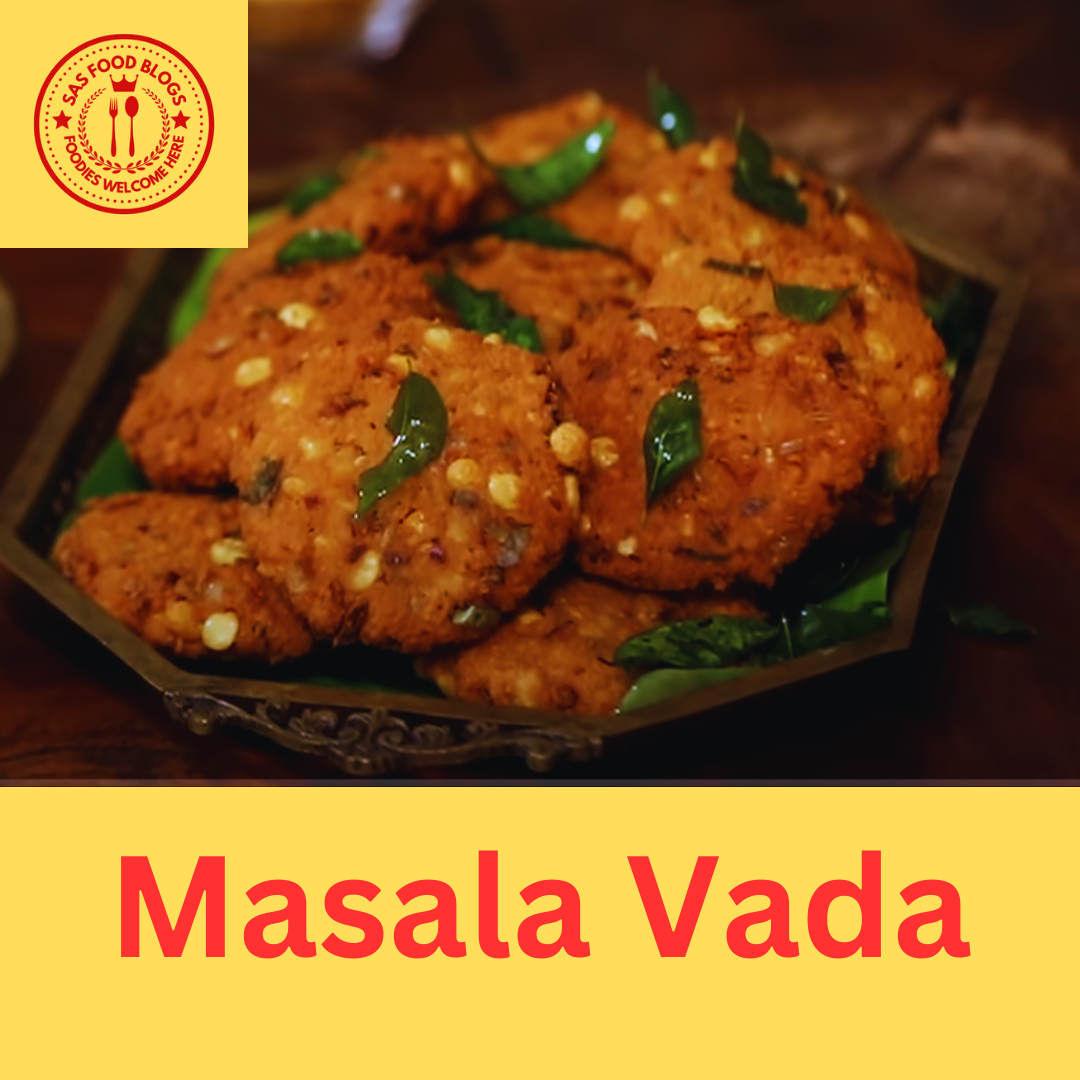How to make Masala Vada?
Hello Friends welcome to SAS FOOD BLOGS, Today we are going to see how to make Masala Vada.
Masala vada is a popular South Indian snack or appetizer. It’s also known by various other names such as paruppu vadai in Tamil, chana dal vada, or masal vadai. The term “masala” in its name refers to the use of various spices and herbs in the preparation.
This delicious snack is typically made from chana dal (split and husked Bengal gram) along with a blend of spices and herbs.
Here’s a basic recipe for making masala vada:
INGREDIENTS:
- 1 cup chana dal (split Bengal gram)
- 1-2 green chillies (adjust to taste)
- 1 small onion, finely chopped
- A few curry leaves
- 2-3 cloves of garlic (optional)
- 1-inch piece of ginger
- 1/2 teaspoon cumin seeds
- 1/2 teaspoon fennel seeds
- A pinch of asafoetida (hing)
- 2-3 tablespoons of fresh coriander leaves, chopped
- Salt to taste
- Oil for deep frying
Preparation Method
Today’s recipe is delicious and taste recipe that is Masala Vada and so let’s gets started.
Step 1 (Masala Vada)
- Take 1 cup of chana dal and wash it and soak it in water for 3 hours. After soaking, drain the water.
- In a food processor or blender, coarsely grind the chana dal without adding any water. The mixture should be somewhat coarse and not a fine paste.
- Add the green chillies, ginger, and garlic to the coarsely ground dal and grind again until they are incorporated.
- Transfer the ground mixture to a mixing bowl and add the chopped onions, curry leaves, cumin seeds, fennel seeds, asafoetida, coriander leaves, and salt. Mix everything together well.
- Take a pan and add oil and heat it by keep the flame on medium heat.
- Then divide the mixture into small portion and shape it into a small ball and then flatten the ball slightly to form a vada shape.
Step 2 (Masala Vada)
- Carefully slide the vada into the hot oil. You can fry several vada’s at a time, depending on the size of your frying pan.
- Fry the vada’s until they turn golden brown and crispy, flipping them occasionally to ensure even cooking.
- Once they are golden brown and crisp, remove them from the oil and drain on paper towels to remove excess oil.
- Masala vada is a flavourful and crunchy snack that is enjoyed in South India and is often served at tea-time or as a starter in traditional South Indian meals.
- The combination of spices and the crispy texture make it a popular and delicious snack option.
Masala Vada is ready to serve, so you can try this recipe in your home and enjoy it and share the recipe with your family and friends.
Benefits of Masala Vada:
Masala vada, like many other traditional South Indian snacks, offers a range of benefits and nutritional value when consumed in moderation. Here are some of the potential benefits of masala vada:
Step 3 (Masala Vada)
- Good Source of Protein: Chana dal, the main ingredient in masala vada, is a rich source of plant-based protein.
- Fiber Content: Chana dal is also high in dietary fiber, which aids in digestion and helps regulate bowel movements. This can be helpful for maintaining digestive health.
- Rich in Essential Nutrients: Chana dal contains essential nutrients like vitamins (B vitamins), minerals (iron, phosphorus, potassium), and antioxidants.
- Spices and Herbs: The spices and herbs used in masala vada, such as ginger, garlic, and cumin, have various health benefits. They can have anti-inflammatory, antimicrobial, and digestive properties.
- Complex Carbohydrates: Masala vada contains complex carbohydrates from chana dal, which provide sustained energy, making it a satisfying and filling snack.
- Gluten-Free: Chana dal is naturally gluten-free, making masala vada suitable for those with gluten sensitivities or celiac disease.
Step 4 (Masala Vada)
- Taste and Satisfaction: Masala vada is not only nutritious but also delicious. It can satisfy your taste buds, making it a satisfying snack or appetizer.
- However, it’s essential to consume masala vada in moderation because it is a deep-fried snack, and excess consumption of fried foods can have adverse health effects.
- To make it healthier, you can consider shallow frying or baking them. Additionally, the nutritional benefits may vary based on the preparation method and the quality of ingredients used.
While masala vada can be a tasty and nutritious addition to your diet, it’s important to maintain a balanced and varied diet to ensure you’re getting a wide range of nutrients from different food sources.
